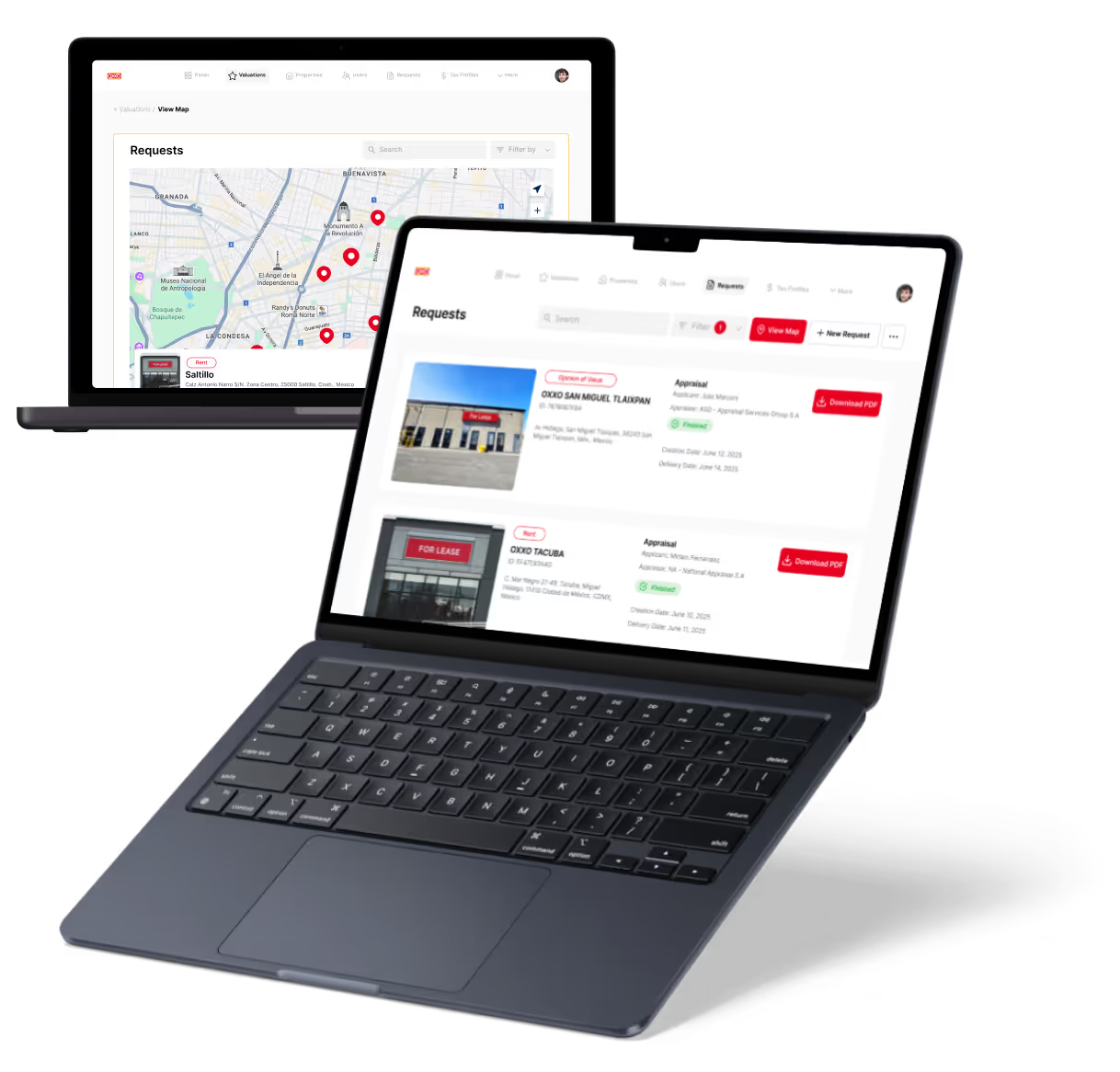Bubble vs Bravo Studio | 11 Factors to Decide the Best One
13 min
read
Compare Bubble vs Bravo Studio for building web or mobile apps. Learn which no-code tool suits your app goals, skills, and publishing needs
.avif)
Bubble is used by over 2 million users to build full web apps, marketplaces, and SaaS platforms with logic, workflows, and databases—all in one platform.
Bravo Studio, on the other hand, turns Figma or Adobe XD designs into real native apps for iOS and Android, without writing code. It connects to tools like Airtable or Xano for backend data and supports mobile features like push notifications and GPS.
Whether you’re a founder building a SaaS or a designer launching a mobile MVP, this guide breaks down their features, workflows, and ideal use cases—so you can decide which platform fits your next project best.
Quick Comparison Table - Bubble vs Bravo Studio
1. What’s the core difference between Bubble vs Bravo Studio?
The core difference between Bubble and Bravo Studio lies in how apps are built and who they’re built for.
Bubble is a full-stack no-code platform designed to build responsive web apps. It gives you complete control over your database, logic, front-end, and workflows—making it ideal for SaaS, dashboards, and marketplaces.
Bravo Studio, on the other hand, focuses on building native mobile apps using designs from Figma or Adobe XD. You design your app visually in Figma, then bring it to life in Bravo using APIs, logic, and real mobile features like push notifications and GPS.
Use Bubble if you want to build a complex web app with backend logic. Choose Bravo Studio if you’re a designer or founder who needs a mobile app powered by design and connected to external data sources. Both are no-code, but their use cases differ a lot.
2. Design workflow and ease of use
Let’s start with how both platforms approach app design and usability.
Is Bubble easy to use for non-technical users?
Bubble gives you full control to build your app without code, but it’s not easy for beginners. Its visual editor lets you design the front-end and create workflows, but it takes time to learn. There are no templates or drag-and-drop blocks like in simpler tools.
You need to understand how logic, data, and layout work together. Once you get past the learning curve, Bubble is very powerful. It’s best for non-technical founders who are willing to spend time learning and want to build something custom from scratch.
How does Bravo Studio integrate with Figma for designers?
Bravo Studio is made for designers. You create your app screens in Figma or Adobe XD, then connect them to Bravo. The tool reads your design layers and converts them into real app screens. You can use tags in Figma to tell Bravo what each layer should do—like navigation, inputs, or lists.
This makes it easy for designers to keep control over how the app looks while still adding logic. It’s a smooth and visual workflow, especially if you already use Figma in your design process.
3. App type and deployment
Now let’s compare what kind of apps you can actually launch with each platform.
What types of apps can you launch with Bubble?
Bubble is best for web applications. You can build full SaaS platforms, marketplaces, internal tools, or client portals. It’s not just for simple sites—you can create custom logic, responsive layouts, and database workflows.
You can also build native mobile apps with Bubble’s newly launched native editor with all needed features for native mobile app. If your goal is to build a web-first product or MVP that runs in the browser, Bubble gives you everything you need from front-end to backend.
Can you publish native mobile apps with Bravo Studio?
Yes. Bravo Studio is designed for building native mobile apps. Once your app is connected and ready, you can generate real iOS (IPA) and Android (APK) files. These apps can be published to the App Store or Google Play. Bravo also lets you preview your app live using Bravo Vision before exporting.
You don’t need to code or hire a developer to go live. This makes Bravo a great option for launching mobile-first apps, especially for teams or founders focused on user experience on phones and tablets.
4. Backend logic and functionality
Next, let’s explore how each platform handles app behavior and complex logic.
Does Bubble support complex workflows and logic?
Yes. Bubble is one of the most powerful no-code platforms for logic. You can create workflows that respond to user actions, database changes, or conditions. It supports things like user authentication, scheduled tasks, API calls, and custom triggers.
You can even build logic for payments, dashboards, or admin controls. Bubble’s backend is visual, but powerful. It takes time to learn, but once mastered, it replaces many traditional tools. You can also use plugins to expand its features. It’s great for apps with logic-heavy operations or business workflows.
How does Bravo Studio handle backend and API connections?
Bravo doesn’t come with a built-in backend, but it connects easily to external ones. You can use tools like Airtable, Supabase, or Xano for your backend. Bravo lets you link each app screen or component to an API using simple setup tools.
You define how the data flows and what actions users can take. You can also handle authentication, filtering, and pagination with API calls. This setup makes Bravo flexible, as you can choose your backend. It’s ideal for those who want to separate design and logic.
Read more about:
5. CMS and data management
Now let’s look at how each tool handles structured content and databases.
How does Bubble handle dynamic data and databases?
Bubble has its own built-in database system. You can create custom data types, add fields, and define how data is stored, shown, or edited. It supports things like repeating groups, searches, and filters—perfect for building dashboards or forms. You can also connect to external APIs or databases if needed.
The database is tightly connected to the visual editor, which makes building data-driven apps smooth. Bubble’s data tools are great for building complex systems like CRMs, marketplaces, or internal dashboards.
Does Bravo Studio support in-app content management?
Bravo doesn’t have a built-in CMS. Instead, it connects to external sources like Airtable or Google Sheets. You manage your data in these tools, and Bravo pulls it into your app using APIs. This works well for small apps or MVPs, but not ideal if you want to edit content from within the app.
You can also use tools like Supabase or Backendless for more advanced database needs. It’s flexible, but you need to manage your backend separately, unlike Bubble which has everything in one place.
6. Integrations and third-party tools
Now let’s compare how both tools work with external services and APIs.
What integrations does Bubble support?
Bubble supports thousands of integrations using plugins or its built-in API Connector. You can connect tools like Stripe, SendGrid, Google Maps, Slack, and more. It also supports REST APIs and GraphQL, so you can build custom integrations with almost any service.
If the integration doesn’t exist in the plugin store, you can create your own using the visual API builder. This makes Bubble very flexible and powerful for founders building apps that rely on third-party tools. Whether it’s email, payments, or analytics, Bubble can connect with almost anything.
Can Bravo Studio connect with external databases and tools?
Yes, Bravo connects well with tools like Airtable, Xano, Supabase, and Google Sheets. You connect Bravo to your data using APIs. You don’t need to write code—just enter the endpoint, headers, and Bravo takes care of the rest. It also supports user authentication and dynamic content.
Bravo doesn’t have a plugin marketplace like Bubble, but it gives enough control for apps that use external backends. It’s especially great for teams that already use Figma and want to add logic to their mobile UI using trusted backend platforms.
7. Native features and mobile UX
Let’s now look at what mobile-native features each tool can offer.
Does Bubble support native mobile features?
By default, Bubble is best choice for web apps. However, you can also build native mobile apps withing the same ecosystem using Bubble’s new native editor. This lets you use native features like push notifications, camera access, geolocation, and more.
Still, the mobile experience isn't perfect, as more native features are planned for the future. If your goal is to prioritize mobile, Bubble can work, but it needs additional setup. For the best results, it's better suited for responsive and complex web apps.
What native capabilities does Bravo Studio include?
Bravo Studio supports many native mobile features. You can use GPS, camera, push notifications, in-app purchases, deep linking, and more. These features are built into the platform and easy to connect using tags and settings. Because Bravo builds real iOS and Android apps, users get a true native experience.
This is great for building apps that need mobile hardware or offline use. If you're making something like a workout app, event app, or booking system, Bravo’s native features help you offer a polished mobile experience without writing code.
Read more about:
8. Publishing and hosting
Here’s how each platform helps you get your app live.
How does app deployment work in Bubble?
Bubble apps are hosted on Bubble’s own cloud. You don’t have to manage servers or domains unless you want to use a custom domain. Publishing your app is as easy as clicking “Deploy.” It handles SSL, backups, scaling, and updates. Bubble also lets you preview your app on a test version before going live.
For mobile apps, you’ll need to wrap your app using a third-party wrapper to get an APK or IPA file. Bubble is best if you’re building a responsive web app that users access through a browser.
How does Bravo Studio handle mobile app publishing?
Bravo makes mobile publishing simple. Once your app is connected and tested, you can export an Android APK or iOS IPA file. You can then upload it to the Google Play Store or Apple App Store. Bravo also offers a live testing app called Bravo Vision, where you can preview your design on a real phone.
It even supports push updates, so you can make changes in Bravo without sending a new app version to the store. For mobile-first teams, Bravo streamlines the publishing process.
9. Target users and skill requirements
Now let’s look at who each platform is made for.
Is Bubble good for non-coders or founders?
Yes, but with effort. Bubble is powerful, but not beginner-easy. It works best for non-technical founders who are willing to learn. You’ll need to understand databases, workflows, and layouts to build a good app. There are many tutorials and templates to help, but the learning curve is real.
Once you get the hang of it, you can build advanced apps without hiring a developer. It’s perfect for SaaS builders or entrepreneurs who want control over both design and backend without writing code.
Is Bravo Studio better for designers and product teams?
Yes, Bravo is perfect for designers. If you already use Figma or Adobe XD, you can turn your mockups into working apps. It’s made for visual creators who want to build real mobile products. You don’t need to learn layout logic or backend coding. Product teams also love Bravo because it separates design and data.
The workflow is quick and focused on mobile UX. If your team designs in Figma and needs to launch a native app fast, Bravo makes the process smooth and efficient.
10. Community and support
Let’s compare the support and learning resources available for each platform.
How strong is the Bubble community and ecosystem?
Bubble has a large and active community. You’ll find a big forum, tons of YouTube tutorials, and a wide range of templates and plugins. There are also expert agencies and freelancers who offer help. Bubble’s learning curve can be steep, but the resources make it easier.
Bubble also has detailed documentation, regular updates, and live webinars. If you get stuck, the community is quick to respond. The plugin ecosystem adds even more value. It’s a mature platform with many success stories and support options.
What support does Bravo Studio provide for creators?
Bravo offers strong beginner support. You get live chat, detailed help docs, and how-to videos for every major feature. There’s also a growing Discord community and regular updates from the Bravo team. While the user base is smaller than Bubble’s, the support is direct and friendly.
Bravo focuses on helping non-technical users succeed, especially designers who are new to app development. It’s not just a tool—it feels like a creative space with helpful people. The documentation is clear and easy to follow for first-time builders.
Read more about:
11. Final verdict – Bubble or Bravo Studio?
Let’s summarize when to pick each platform based on your project goals.
When to choose Bubble over Bravo Studio
Choose Bubble if you want to build a custom web application with user login, databases, payments, and logic—all inside one visual builder. It’s perfect for SaaS apps, dashboards, internal tools, and client portals.
Bubble gives you full control of both frontend and backend, so you don’t need to manage external tools. It’s also good if your users will mostly use your app on desktop or mobile browsers. The learning curve is higher, but the flexibility and depth are unmatched for serious builders.
When to choose Bravo Studio over Bubble
Choose Bravo Studio if your goal is to launch a beautiful native mobile app fast, especially if you’re already working in Figma. It’s ideal for designers and product teams who want to control the look of their app without worrying about backend logic or layout complexity.
If your app uses APIs or no-code backends like Airtable or Supabase, Bravo makes the process smooth. It’s perfect for MVPs, mobile-first tools, event apps, or client apps that need push notifications and real mobile interactions.
Created on
July 3, 2025
. Last updated on
December 11, 2025
.

FAQs
Can Bubble build mobile apps like Bravo Studio?
Is Bravo Studio easier to use than Bubble?
Can I use databases in both platforms?
Do both tools support API connections?
Which one is better for non-coders?
Can you monetize apps on both platforms?







%20(Custom).avif)








.avif)